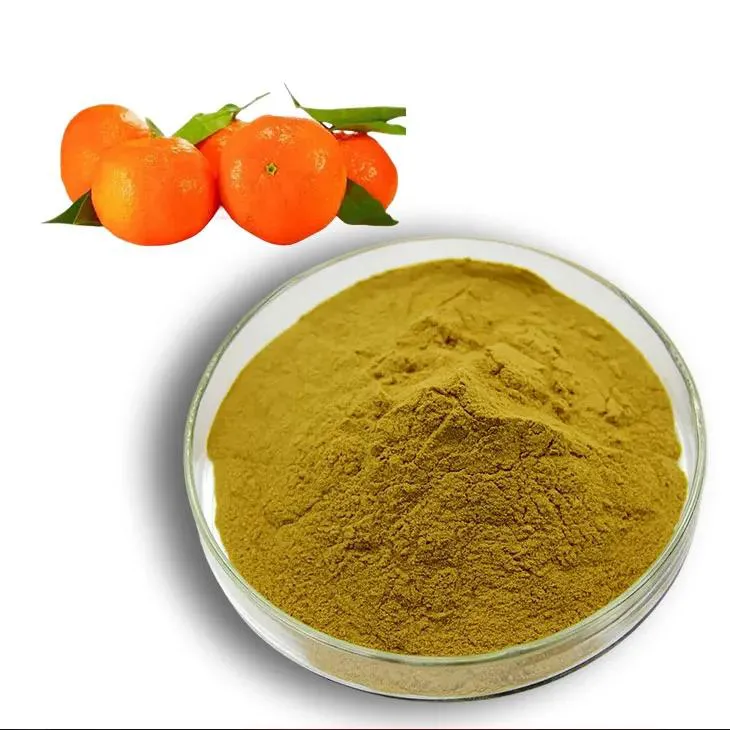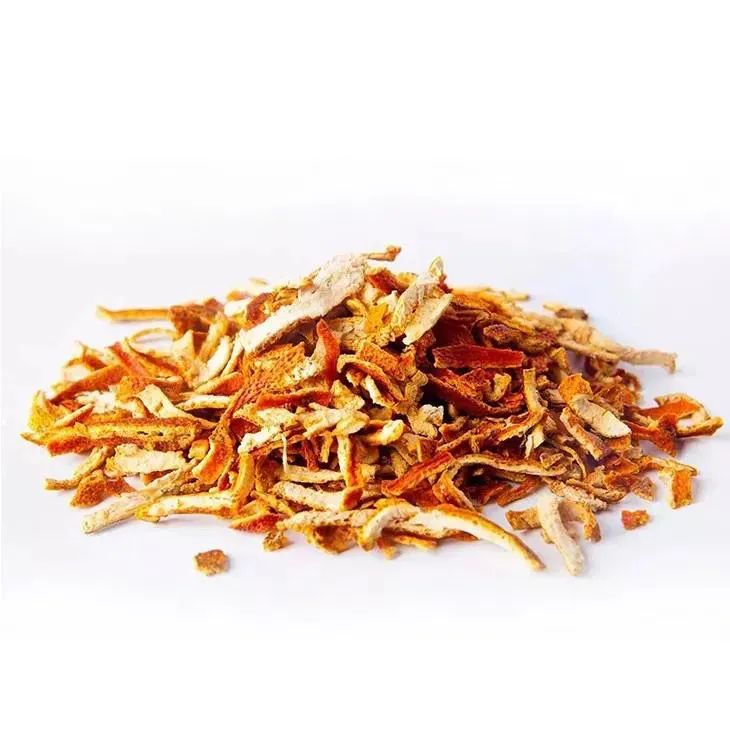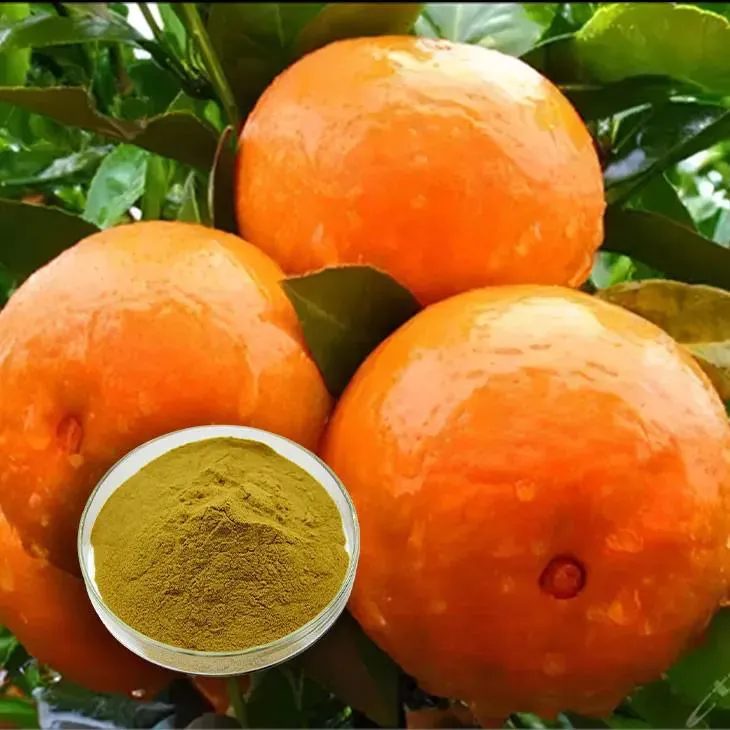- 0086-571-85302990
- sales@greenskybio.com
Extraction Technology and Production Process of Citrus Bioflavonoids
2024-11-26

1. Introduction to Citrus bioflavonoids
Citrus bioflavonoids are a group of natural compounds found in citrus fruits such as oranges, lemons, and grapefruits. These bioflavonoids possess unique chemical structures and a wide range of potential health benefits.
One of the main characteristics of Citrus bioflavonoids is their antioxidant activity. They can scavenge free radicals in the body, which are highly reactive molecules that can cause damage to cells and tissues. By neutralizing free radicals, citrus bioflavonoids may help prevent various chronic diseases, including heart disease, cancer, and neurodegenerative disorders.
Another important property is their anti - inflammatory effect. Inflammation is a natural response of the body to injury or infection, but chronic inflammation can lead to tissue damage and disease development. Citrus bioflavonoids have been shown to modulate the body's inflammatory response, reducing the production of pro - inflammatory cytokines and enzymes.
Furthermore, citrus bioflavonoids may also have beneficial effects on blood vessels. They can improve endothelial function, which is crucial for maintaining normal blood flow and blood pressure. Some studies suggest that they may help prevent the formation of blood clots and reduce the risk of cardiovascular events.

2. Common Extraction Technologies
2.1 Solvent Extraction
Solvent extraction is one of the traditional methods for extracting citrus bioflavonoids. In this process, a suitable solvent is used to dissolve the bioflavonoids from the citrus raw materials. Common solvents include ethanol, methanol, and acetone.
The process typically involves grinding the citrus peel or other parts of the fruit into a fine powder, followed by soaking in the solvent for a certain period of time. After that, the mixture is filtered to separate the solvent containing the bioflavonoids from the solid residue.
However, solvent extraction has some limitations. One of the main problems is the potential toxicity of the solvents. Residual solvents in the final product may pose a risk to human health. Additionally, this method may not be very selective, and other unwanted compounds may also be extracted along with the bioflavonoids.
2.2 Enzymatic Extraction
Enzymatic extraction is considered a more environmentally friendly and selective method. Enzymes are used to break down the cell walls of the citrus tissues, making it easier to release the bioflavonoids.
For example, cellulase and pectinase are commonly used enzymes in enzymatic extraction. These enzymes can hydrolyze the cellulose and pectin in the cell walls, respectively. The process usually starts with preparing an enzyme solution with an appropriate pH and temperature. Then, the citrus raw materials are added to the enzyme solution and incubated for a specific time.
Compared to solvent extraction, enzymatic extraction has several advantages. It is more specific, targeting only the cell walls without causing significant damage to the bioflavonoids. Moreover, it is less likely to produce toxic by - products, making it a safer option for the production of bioflavonoid extracts.
2.3 Supercritical Fluid Extraction
Supercritical fluid extraction (SFE) is a relatively new and advanced extraction technology. In SFE, a supercritical fluid, usually carbon dioxide (CO₂), is used as the extraction solvent.
At supercritical conditions (above its critical temperature and pressure), CO₂ has properties between those of a gas and a liquid. It has a high diffusivity and low viscosity, which enables it to penetrate the citrus tissues easily and extract the bioflavonoids efficiently.
The process of SFE involves pressurizing CO₂ to its supercritical state, passing it through the citrus raw materials, and then depressurizing it to separate the bioflavonoids. One of the major benefits of SFE is its ability to produce high - quality extracts with minimal solvent residues. However, the equipment for SFE is relatively expensive, which may limit its widespread application in small - scale production.

3. Comparison of Extraction Technologies
When comparing these extraction technologies, several factors need to be considered:
- Yield: Solvent extraction may offer a relatively high yield in some cases, but it may also extract a large amount of impurities. Enzymatic extraction can achieve a reasonable yield while maintaining the quality of the bioflavonoids. Supercritical fluid extraction can also provide a good yield, especially for high - value bioflavonoids.
- Purity: Enzymatic extraction and supercritical fluid extraction generally result in higher - purity extracts compared to solvent extraction. The selectivity of enzymatic and SFE methods helps to reduce the presence of unwanted compounds in the final product.
- Cost: Solvent extraction is often the cheapest method in terms of equipment and raw materials. However, the cost of subsequent purification steps to remove solvent residues may increase the overall cost. Enzymatic extraction requires the purchase of enzymes, which can be costly. Supercritical fluid extraction has a high initial investment due to the expensive equipment.
- Environmental Impact: Enzymatic extraction is the most environmentally friendly option as it uses biodegradable enzymes and produces less waste. Solvent extraction may generate organic solvent waste, which needs proper disposal. Supercritical fluid extraction, although using CO₂ which is relatively environmentally friendly, still requires energy for pressurization.

4. Production Process of Citrus Bioflavonoids
4.1 Raw Material Selection
The quality of the raw materials is crucial for the production of high - quality citrus bioflavonoid products. Citrus fruits should be carefully selected based on factors such as variety, ripeness, and origin.
For example, different citrus varieties may contain different types and amounts of bioflavonoids. Oranges are known to be rich in Hesperidin, while lemons contain high levels of eriocitrin. Therefore, the choice of variety depends on the specific bioflavonoids of interest.
Ripeness also affects the content of bioflavonoids. Generally, fully ripened fruits may have a higher concentration of bioflavonoids. Additionally, the origin of the fruits can influence their quality due to differences in soil, climate, and agricultural practices.
4.2 Pretreatment of Raw Materials
Before extraction, the citrus raw materials need to be pretreated. This may include washing to remove dirt and pesticides, peeling to separate the peel (which is a rich source of bioflavonoids) from the pulp, and drying to reduce the moisture content.
Drying can be done using various methods such as air drying, oven drying, or freeze - drying. Each method has its own advantages and disadvantages. Air drying is a simple and cost - effective method, but it may take a long time and is affected by environmental conditions. Oven drying can be faster, but it may cause some degradation of bioflavonoids at high temperatures. Freeze - drying is the best method for preserving the bioactivity of bioflavonoids, but it is also the most expensive.
4.3 Extraction
As discussed earlier, the choice of extraction method depends on various factors. Once the extraction method is selected, the extraction process is carried out according to the specific parameters of the method.
During extraction, it is important to control factors such as temperature, time, and the ratio of raw materials to the extraction agent. These factors can significantly affect the yield and quality of the bioflavonoid extract.
4.4 Purification
After extraction, the obtained extract usually contains impurities and other unwanted compounds. Purification is necessary to obtain a high - quality citrus bioflavonoid product.
Common purification methods include chromatography (such as column chromatography and high - performance liquid chromatography), filtration, and crystallization. Chromatography can effectively separate different components based on their chemical properties. Filtration can remove solid particles, and crystallization can be used to obtain pure bioflavonoid crystals.
4.5 Quality Control
Quality control is an essential part of the production process of citrus bioflavonoids. Quality control should be carried out at every stage, from the raw materials to the final product.
For raw materials, tests can be conducted to check for pesticide residues, heavy metal content, and the content of bioflavonoids. During the production process, parameters such as extraction efficiency, purity of the extract, and the presence of solvent residues should be monitored.
For the final product, in addition to the above - mentioned aspects, bioactivity assays should be carried out to ensure that the product retains its potential health benefits. Packaging and storage conditions also play an important role in maintaining the quality of the product. The product should be packaged in a suitable container to protect it from light, moisture, and oxygen, and stored at an appropriate temperature.
5. Conclusion
Citrus bioflavonoids have great potential in the field of natural product utilization. The extraction technology and production process are crucial for obtaining high - quality bioflavonoid products.
Each extraction method has its own advantages and disadvantages, and the choice should be based on factors such as yield, purity, cost, and environmental impact. In the production process, strict quality control from raw materials to the final product is essential to ensure the safety and efficacy of citrus bioflavonoid products in the market.
FAQ:
What are the main characteristics of citrus bioflavonoids?
Citrus bioflavonoids have several main characteristics. They are a group of polyphenolic compounds. They are typically found in citrus fruits such as oranges, lemons, and grapefruits. They often have antioxidant properties, which can help in neutralizing free radicals in the body. Also, they can contribute to the color, flavor, and aroma of citrus fruits.
What are the potential health benefits of citrus bioflavonoids?
The potential health benefits of citrus bioflavonoids are numerous. They may help in reducing inflammation in the body. Due to their antioxidant nature, they might play a role in preventing chronic diseases such as heart disease and certain cancers. They could also support the immune system, potentially helping the body fight off infections more effectively. Additionally, some citrus bioflavonoids may have beneficial effects on blood vessels, such as improving endothelial function.
What makes enzymatic extraction a more environmentally friendly option for citrus bioflavonoid extraction?
Enzymatic extraction is more environmentally friendly for several reasons. Firstly, it generally operates at milder conditions such as lower temperatures and less extreme pH levels compared to some other extraction methods. This reduces the energy consumption required for maintaining harsh extraction conditions. Secondly, enzymes are highly specific in their action, which means they can target the release of bioflavonoids more precisely, reducing the waste of raw materials. Also, enzymatic extraction often generates fewer harmful by - products, which is better for the environment.
What are the key quality control points in the production process of citrus bioflavonoids?
In the production process of citrus bioflavonoids, there are several key quality control points. Starting from the source of raw materials, the quality and freshness of citrus fruits need to be ensured. The extraction process should be carefully monitored to control parameters such as extraction time, temperature, and enzyme concentration (if enzymatic extraction is used). Purification steps need to be effective in removing impurities without losing significant amounts of bioflavonoids. During packaging, proper packaging materials should be selected to protect the bioflavonoids from degradation due to factors like light, oxygen, and moisture. Finally, strict quality testing should be carried out on the final product to ensure it meets the required standards for bioflavonoid content and purity.
How can the quality of citrus bioflavonoid products in the market be ensured?
To ensure the quality of citrus bioflavonoid products in the market, strict regulations and quality control measures need to be in place. Manufacturers should adhere to good manufacturing practices (GMP) throughout the production process. This includes proper sourcing of raw materials, accurate extraction and purification techniques, and appropriate packaging. Third - party testing can also be very helpful in verifying the quality of products. Additionally, transparency in labeling, indicating the bioflavonoid content, source, and any additives, is crucial for consumers to make informed choices.
Related literature
- Citrus Bioflavonoids: Extraction, Analysis and Biological Activities"
- "Advances in the Extraction and Application of Citrus Bioflavonoids"
- "Production and Quality Control of Citrus Bioflavonoid - Rich Extracts"
- ▶ Hesperidin
- ▶ Citrus Bioflavonoids
- ▶ Plant Extract
- ▶ lycopene
- ▶ Diosmin
- ▶ Grape seed extract
- ▶ Sea buckthorn Juice Powder
- ▶ Fruit Juice Powder
- ▶ Hops Extract
- ▶ Artichoke Extract
- ▶ Mushroom extract
- ▶ Astaxanthin
- ▶ Green Tea Extract
- ▶ Curcumin
- ▶ Horse Chestnut Extract
- ▶ Other Product
- ▶ Boswellia Serrata Extract
- ▶ Resveratrol
- ▶ Marigold Extract
- ▶ Grape Leaf Extract
- ▶ New Product
- ▶ Aminolevulinic acid
- ▶ Cranberry Extract
- ▶ Red Yeast Rice
- ▶ Red Wine Extract
-
Aminolevulinic acid
2024-11-26
-
Saffron Extract Powder
2024-11-26
-
Shikone Extract
2024-11-26
-
Agaricus Blazei Extract
2024-11-26
-
Elderberry Extract
2024-11-26
-
Andrographis Paniculata Extract Powder
2024-11-26
-
Sugarcane Extract
2024-11-26
-
Kidney Bean Extract
2024-11-26
-
Jujube Extract
2024-11-26
-
Berberis aristata Extract
2024-11-26





















